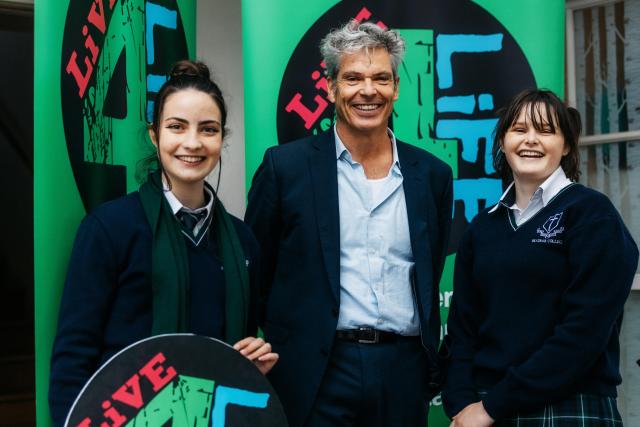Elsie Lange
A Woodend-based youth mental health organisation is calling for more funding from the Victorian government to scale up its rural and regional services to address is surging waitlist of communities wanting to be involved.
Live4Life is urging the government to financially support its evidence-based suicide prevention models for young people all over Victoria. The group now operates in nine rural communities across the state, but have a waitlist of another 20.
With the state government budget considerations under way for its release in May, the group’s call is timely.
Youth Live4Life chief executive Bernard Galbally said it was vital the government helped them broaden their scope to allow them to reach into the many more communities in need.
“[It would help] the scaling up of our award-winning, evidence-based, youth mental health and suicide prevention initiative, Life4Life and deliver on many of the preventative recommendations outlined in the Royal Commission into Victoria’s Mental Health System,” he said.
The Live4Life model was developed in 2010 by Macedon Ranges council as a response to increased mental health issues in the region – in 2015, Youth Live4Life was formed to help expand youth suicide prevention.
Live4Life pointed to recent data released by the Coroners Court of Victoria and NSW Health which confirmed “suicide rates have increased in both states in 2022”.
It is understood the state Department of Health has provided funding to Youth Live4Life since 2019. The initiative is also a part of the government’s School Mental Health Fund as a tier one program, meaning schools can use their funding to access the program.
Mental Health Minister Gabrielle Williams said the state government had embarked on the biggest reform of a mental health system in the country’s history.
This includes implementing a mental health practitioner in every Victorian government secondary and specialist school, and in the next four years primary schools are set to have a dedicated mental health and wellbeing leader.
“We’re not wasting a minute building a system that works for every Victorian who needs care as soon as they need it, no matter where they live,” she said.
Mr Galbally said the government had “stepped up to the plate” in attempting to address the gaps in the state’s mental health system, but more needed to be done.
“Ongoing Victorian government funding will help ensure a prevention initiative with proven outcomes is available to more rural and regional communities,” he said.







